Posted on 2 February 2020 by Alessandro Travi
Trekking in the Kathmandu Valley: get prepared
Since we bought our flight to Kathmandu, we’ve been focused on planning our tour of the country. We particularly choose to split our trip into two trekking routes, one in the Annapurna region and the other around the Kathmandu Valley.
Hereafter, we’re sharing our trekking in the Kathmandu Valley.
We’ve made it into a 3 days trek, as a sort of a ring departing and arriving in Kathmandu. Officially, our trek started in Nagarkot, following this plan:
- Day 1: From Nagarkot to Dhulikhel
- Day 2: From Dhulikhel to Balthali
- Day 3: From Balthali to Panauti
Please note that you won’t need any permits to go on a trek in the Kathmandu Valley, the TIMS card neither. If you don’t know what we’re talking about, go and see here.
Getting to Nagarkot
We decided to start our trekking in the Kathmandu Valley from Nagarkot.
We were staying in Kathmandu and from there we went for a visit to Bhaktapur. Then we took a local bus to get to Nagarkot directly from Bhaktapur. If you’d like to do the same, you could take your local bus at the station near Kamal Pokhari:













Signals on buses are written in Nepalese only, but don’t be afraid to ask for some help to people at the station: someone will kindly suggest which bus you should take. Needless to say, nothing could be further from a comfortable bus trip. The road is a bumpy one and the bus would probably be too overcrowded, so do not expect a quite ride. However, this is the kind of thing that makes you experiencing how real Nepalese life feels like (and it helps you save some money, too), so it’s strongly suggested.
Bhaktapur to Nagarkot is a ~ 1h ride and will cost you 50NPR.
Would you either stay in Nagarkot or just pass by, you’d have to pay an entry tax. Well, this tax seems to be illegal, but there’s no chance for you to entry into the city if you don’t pay it.
It’s a 340NPR tax. If you’d like to know more about that, read this.
We pinned Nagarkot as the starting point for our trekking route because it’s recommended as a strategic point to see the sun going down on the Hymalayas. Honestly, we didn’t find it so interesting nor beautiful and if you also consider that there’s this annoying tax to pay for, we don’t recommend this city to anyone. You should probably plan to stay in one of the nearest town instead, especially if you’re traveling on a budget.
Day 1: Trekking from Nagarkot to Dhulikhel
The very first day on this trek, which starts with a quite long trait. We’re talking about more than 18km/11mi, along which you will find yourself with a constant view on the full Hymalayan mountain chain on one side and mustard flowers all around you.
The initial part of this route is far from urban contexts and it’s a real pleasure to walk in this kind of environment. Kathmandu’s pollution and noise are just a distant memory.
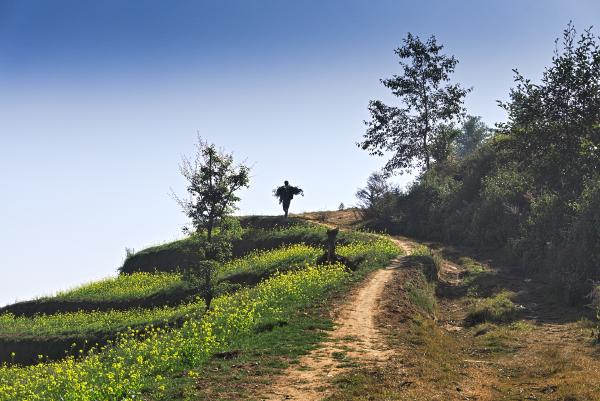
Trekking in the Kathmandu Valley surrounded by mustard flowers
The more you get closer to Dhulikhel, the more you feel like you’re back to civilization. We got eyes on us in Dhulikel, may be because there’s not so many white people trekking that area in December. Indeed, we didn’t encounter any tourist on this route.
We’ve been staying at the Bhattidanda Fresh & Natural Homestay in Dhulikhel and we do remember this stay as one of the best we had in Nepal: the kindest people and a WOW Dal Bhat.
Duration: ~ 8h
Distance: ~ 18km
Accomodation: Bhattidanda Fresh & Natural Homestay
Day 2: Trekking from Dhulikhel to Balthali
Second day of trekking in the Kathmandu valley and more than 15km/9mi to walk.
We’ve divided this second day into two parts, with a stop at Namo Budda in the very middle. To enter the Namo Budda area and monastery you’ll have to pay a tax of 100NPR pp.
If you’d decide to stop here as we did, you’ll find yourself in a magic athmosphere, with prayer flags all around the area and prayer wheels to spin. Namo Budda is a must-destination for every Buddhist from Nepal and beyond. The monastery is actually a school, a seminary for young Buddhists. You could see teens wearing the traditional tibetan costumes involved in trainings and praying ceremonies. You could even visit the magnificient rooms where they practice. A oh-so strong experience.
You could also eat, retreat and sleep in the monastery, and we do believe it’s worth it. However, we still had a long road ahead, so we’ve continued our trek to Balthali.
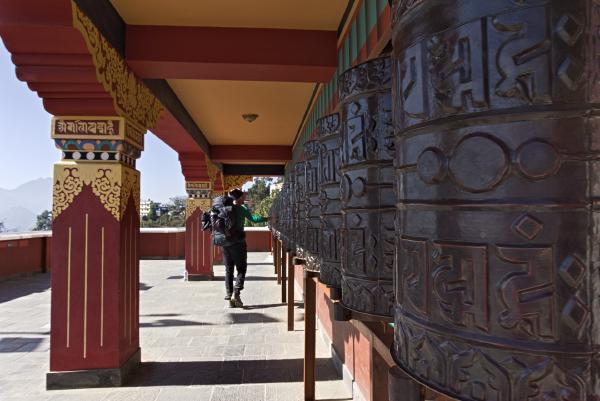
Kathmandu Valley's pearl: Namo Buddha
The remaining trait has definitely been a non-touristic route, walked by locals only, nestled in nature.
Balthali is one of a kind town, small and poor. The athmosphere here is so genuinely Nepalese.
It’s been right in Balthali that there’s been a little glitch, though. Balthali has a perched zone, where resorts are, and a lower part. The guest-house we booked were geo-loc’ed in the upper town but we’ve suddenly realized there was something wrong with that. We had then to back trek and walk back to the lower town. We were so damn tired already, so having to add more kilometers to our daily trekking has been like a punch in the face. Eventually, we were able to find Sabina’s Homestay with the help of some kind people we met on the road.
We can definitely define this one as the most genuine stay we had. This place is basically a family house, neither Sabina nor her sisters were at home so we had to talk by gestures with her parents, who don’t speak any English.
We had the best Masala tea ever, too.
Duration: ~ 8h
Distance: ~ 15km
Accomodation: Sabina’s Homestay
Day 3: Trekking from Balthali to Panauti
After two challenging days, we’ve planned a shorter route for this last third day of trekking in the Kathmandu valley. It’s a 7km/4mi trait.
This one is probably the less interesting trait under a naturalistic prospective, since you’d be walking on a highway (still a dusty road though).
If you prefer, you could even take a bus from Khopasi to Panauti. However, we do suggest to proceed on foot perhaps protecting your face with a mask like these.
You’d be walking through several villages and you could have the chance to see how real life is in towns like those, especially if you’re passing by during mornings, when places like these are more alive than ever. You would see kids in their uniforms going school, men and women working in camps, clothes laying to air dry, mechanics, tailors’ workshops, people wearing flip-flops while bricklaying…
It’s worth planning a stop in Panauti, a beautiful small city with plenty of religious sites although way less charming than Bhaktapur.
Panauti is also a pilgrimage destination as Makar Mela, a festival in honour of Shiva, is celebrated there every 12 years.
This 3-days trekking around the Kathmandu Valley has ended on the bus we’ve taken directly in Panauti to go back to Kathmandu. It took 1h30 to get back to the capital on an overcrowded local bus that costed us 120NPR only.
Here’s the bus station from where we departed:
















Duration: ~ 3h
Distance: ~ 7km
Accomodation: we went back to Kathmandu
GPS track
This is the GPS track that we designed and traveled:
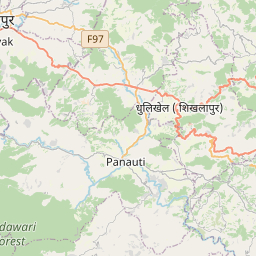

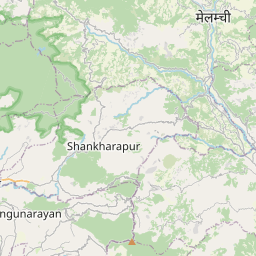

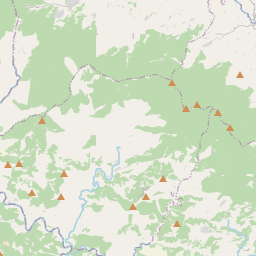







Download
If you like this post buy us a coffee ☕